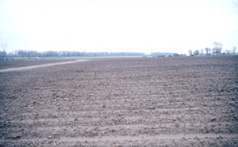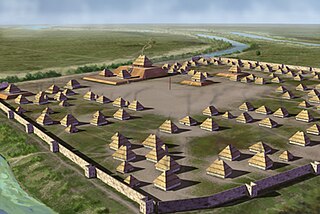
Tipton County is a county located on the western end of the U.S. state of Tennessee, in the Mississippi Delta region. As of the 2010 census, the population was 61,081. Its county seat is Covington.

Atoka is a local government area with a town charter in Tipton County, Tennessee, United States. In 1888, Atoka was a stop on the Newport News & Mississippi Valley Railroad. Today the City of New Orleans Amtrak passenger train makes its daily route between New Orleans and Chicago, through Atoka.

Covington is a city in central Tipton County, Tennessee, United States. Covington is the largest city and county seat of Tipton County. The city is located in West Tennessee, 12 mi (19 km) east of the Mississippi River. The city's population was 9,038 at the time of the 2010 U.S. Census. Located 42 mi (68 km) northeast of Memphis, Covington is part of the Memphis, Tennessee Metropolitan Area.

Reverie is an unincorporated community in Tipton County, Tennessee, United States. In 2001, the population was 11.

The Nodena Site is an archeological site east of Wilson, Arkansas and northeast of Reverie, Tennessee in Mississippi County, Arkansas, United States. Around 1400–1650 CE an aboriginal palisaded village existed in the Nodena area on a meander bend of the Mississippi River. The Nodena site was discovered and first documented by Dr. James K. Hampson, archaeologist and owner of the plantation on which the Nodena site is located. Artifacts from this site are on display in the Hampson Museum State Park in Wilson, Arkansas. The Nodena Site is the type site for the Nodena Phase, believed by many archaeologists to be the province of Pacaha visited by Spanish explorer Hernando de Soto in 1542.

The Eaker Site (3MS105) is an archaeological site on Eaker Air Force Base near Blytheville, Arkansas that was declared a National Historic Landmark in 1996. The site is the largest and most intact Late Mississippian Nodena Phase village site within the Central Mississippi Valley, with archaeological evidence indicating a palisaded village some 50 acres (20 ha) in size, with hundreds of structures. The site's major period of occupation was 1350–1450 CE, although evidence of occupation dates back to 600 CE. The site is also hypothesized to have been occupied by the Quapaw prior to a migration further south, after which they made contact with Europeans in the late 17th century.

Parkin Archeological State Park, also known as Parkin Indian Mound, is an archeological site and state park in Parkin, Cross County, Arkansas. Around 1350–1650 CE an aboriginal palisaded village existed at the site, at the confluence of the St. Francis and Tyronza rivers. Artifacts from this site are on display at the site museum. The Parkin Site is the type site for the Parkin phase, an expression of the Mississippian culture from the Late Mississippian period. Many archeologists believe it to be part of the province of Casqui, documented as visited by Spanish explorer Hernando de Soto in 1542. Archeological artifacts from the village of the Parkin people are dated to 1400–1650 CE.

Hampson Archeological Museum State Park is a 5-acre (2.0 ha) Arkansas state park in Mississippi County, Arkansas in the United States. The museum contains a collection of archeological artifacts from the Nodena Site, which is a former Native American village on the Mississippi River between 1400 and 1650. James K. Hampson began excavating the site in the 1920s, a museum was built in 1946 and the Arkansas General Assembly officially accepted the collection of artifacts from the Hampson family on March 30, 1957. The park first opened in 1961 as Hampson Museum State Park and has since been renamed.

James Kelly Hampson was the archaeologist to excavate and preserve the artifacts from the Nodena Site and owner of the Hampson Plantation in Wilson, Arkansas.

The Winterville Site is a major archaeological site in unincorporated Washington County, Mississippi, north of Greenville. It consists of major earthwork monuments, including more than twelve large platform mounds and cleared and filled plazas. It is the type site for the Winterville Phase of the Lower Yazoo Basin region of the Plaquemine Mississippian culture. Protected as a state park, it has been designated as a National Historic Landmark. In June 2015 the state authorized $300,000 to restore the mounds to their pre-Columbian condition and add walking trails to the park. The site also includes a museum.

Randolph is an unincorporated rural community in Tipton County, Tennessee, United States, located on the banks of the Mississippi River. The lands of the Mississippi River Basin were inhabited by Paleo-Indians and later Native American tribes of the Mississippian culture for thousands of years. The Tipton Phase people and the Chickasaw Indian tribe populated the Mississippi River valley near Randolph during the Mississippian period. In 1541, Spanish explorer Hernando de Soto crossed the Mississippi River at or near Randolph. French explorer Cavelier de La Salle built the first French fortification at or near Randolph on his 1682 canoe expedition of the Mississippi River.

Fort Wright was constructed in 1861 and located on the second Chickasaw Bluff at Randolph, Tipton County, Tennessee. Fort Wright was a Civil War fortification and the first military training facility of the Confederate Army in Tennessee.
Dan Franklin Morse is an archaeologist specializing in the prehistory of the midwestern United States and the central Mississippi Valley, research summarized in a number of books, monographs, and technical articles. He is best known for his 1983 synthesis of the "Archaeology of the Central Mississippi Valley" with Phyllis A. Morse, and for his 1997 volume issued by the Smithsonian Institution Press on "Sloan: A Paleoindian Dalton Cemetery in Arkansas." The Sloan site is the location of the oldest marked cemetery found to date in the Americas. He conducted excavations on a great many other significant archaeological sites during his career, including at Brand, Cahokia, Nodena, Parkin, and Zebree. Morse retired from his posts as Survey Archeologist for the Arkansas Archaeological Survey and as Professor of Anthropology at the University of Arkansas in 1997, after 30 years of service, but continues to work on publications and interact with students and colleagues on sites.

The C.H. Nash Museum at Chucalissa is located on and exhibits excavated materials of the Mississippian culture archaeological site known as Chucalissa which means "abandoned house" in Choctaw. The site is located adjacent to the T. O. Fuller State Park within the city of Memphis, Tennessee, United States. Chucalissa was designated National Historic Landmark in 1994 due to its importance as one of the best-preserved and major prehistoric settlement sites in the region.

The Campbell Archeological Site (23PM5), is an archaeological site in Southeastern Missouri occupied by the Late Mississippian Period Nodena Phase from 1350 to 1541 CE. The site features a large platform mound and village area, as well as several cemeteries. The site was excavated by amateur archaeologist Leo O. Anderson and Professor Carl Chapman from 1954 to 1968 and subsequently published the first material on the site in 1955. The site has yielded the largest number of Spanish artifacts of any prehistoric site in Southeastern Missouri. Finds at the site included glass chevron beads, a Clarksdale bell, iron knife fragments and part of a brass book binder. It was added to the NRHP on July 24, 1974 as NRIS number 74001086.

The Walls Phase is an archaeological phase in southwestern Tennessee and northwestern Mississippi of the Late Mississippian culture. Chucalissa is a Walls Phase mound and plaza complex located on a bluff overlooking the Mississippi River. Other contemporaneous groups in the area include the Parkin Phase, Tipton Phase, Menard Phase, and the Nodena Phase. The Walls Phase is the last prehistoric people to inhabit the Memphis area before the arrival of Europeans. During the early 1540s the Hernando de Soto Expedition passed through the area, stopping at many villages along the way. It is thought that the Walls Phase may be the Province of Quizquiz, a Tunican people encountered by de Soto on the banks of the Mississippi River.

The Tunica people were a group of linguistically and culturally related Native American tribes in the Mississippi River Valley, which include the Tunica ; the Yazoo; the Koroa ; and possibly the Tioux. They first encountered Europeans in 1541 - members of the Hernando de Soto expedition.
Corona is an unincorporated community in Tipton County, Tennessee, United States.

The Nodena Phase is an archaeological phase in eastern Arkansas and southeastern Missouri of the Late Mississippian culture which dates from about 1400–1650 CE. The Nodena Phase is known from a collection of villages along the Mississippi River between the Missouri Bootheel and Wapanocca Lake. They practiced extensive maize agriculture and artificial cranial deformation and were members of a continent wide trade and religious network known as the Southeastern Ceremonial Complex, which brought chert, whelk shells, and other exotic goods to the area.

Mississippian culture pottery is the ceramic tradition of the Mississippian culture found as artifacts in archaeological sites in the American Midwest and Southeast. It is often characterized by the adoption and use of riverine shell-tempering agents in the clay paste. Shell tempering is one of the hallmarks of Mississippian cultural practices. Analysis of local differences in materials, techniques, forms, and designs is a primary means for archaeologists to learn about the lifeways, religious practices, trade, and interaction among Mississippian peoples. The value of this pottery on the illegal antiquities market has led to extensive looting of sites.



















